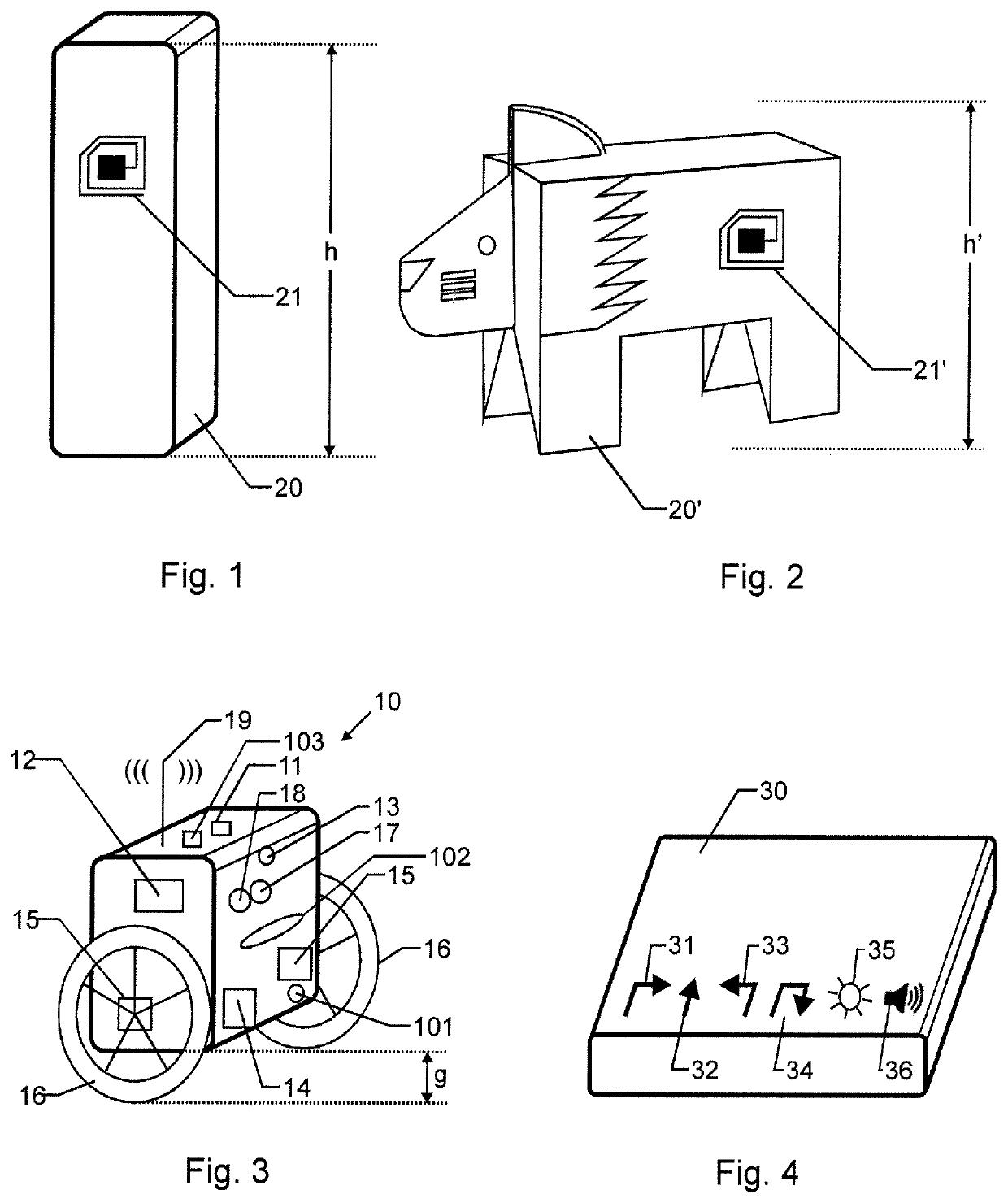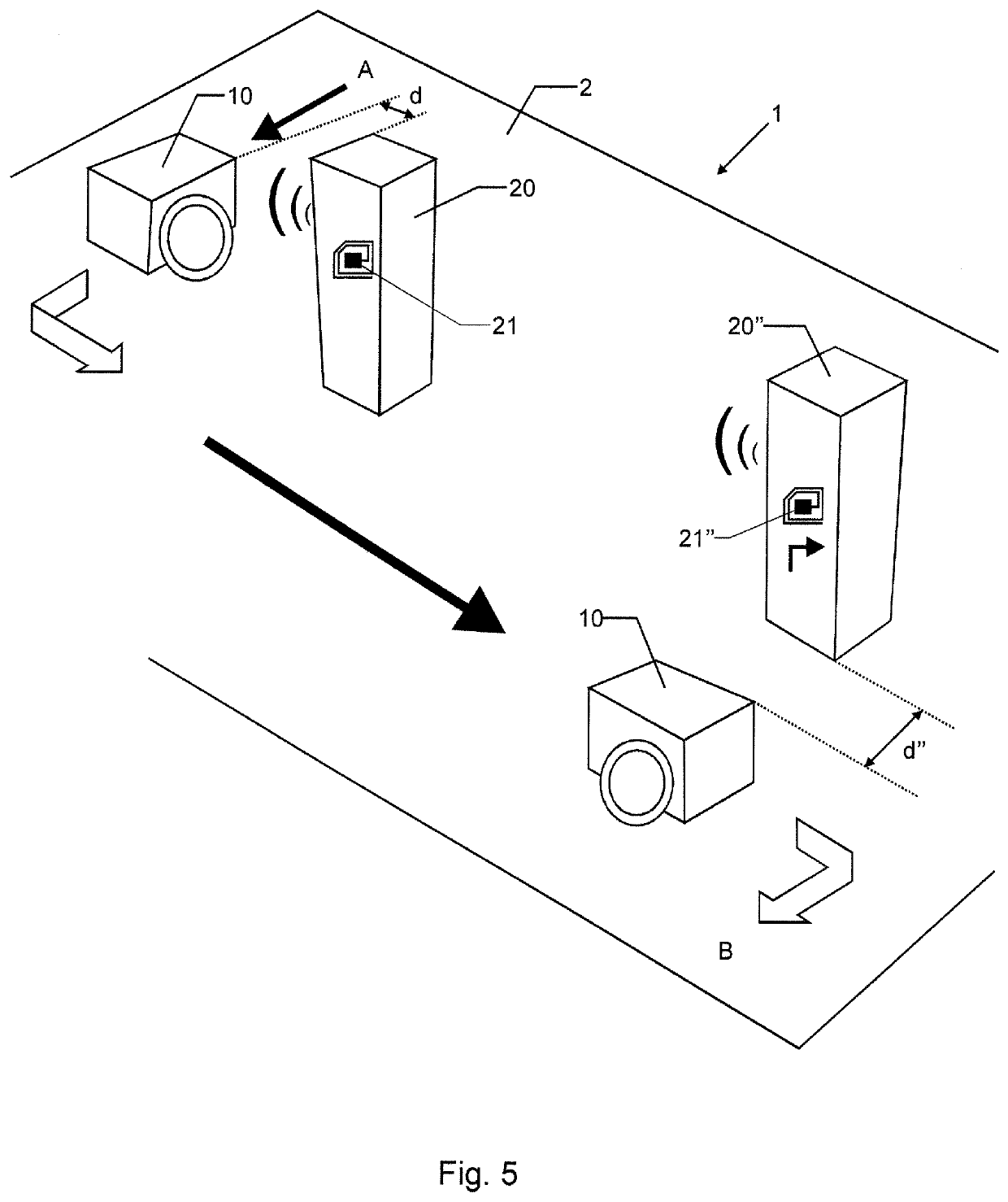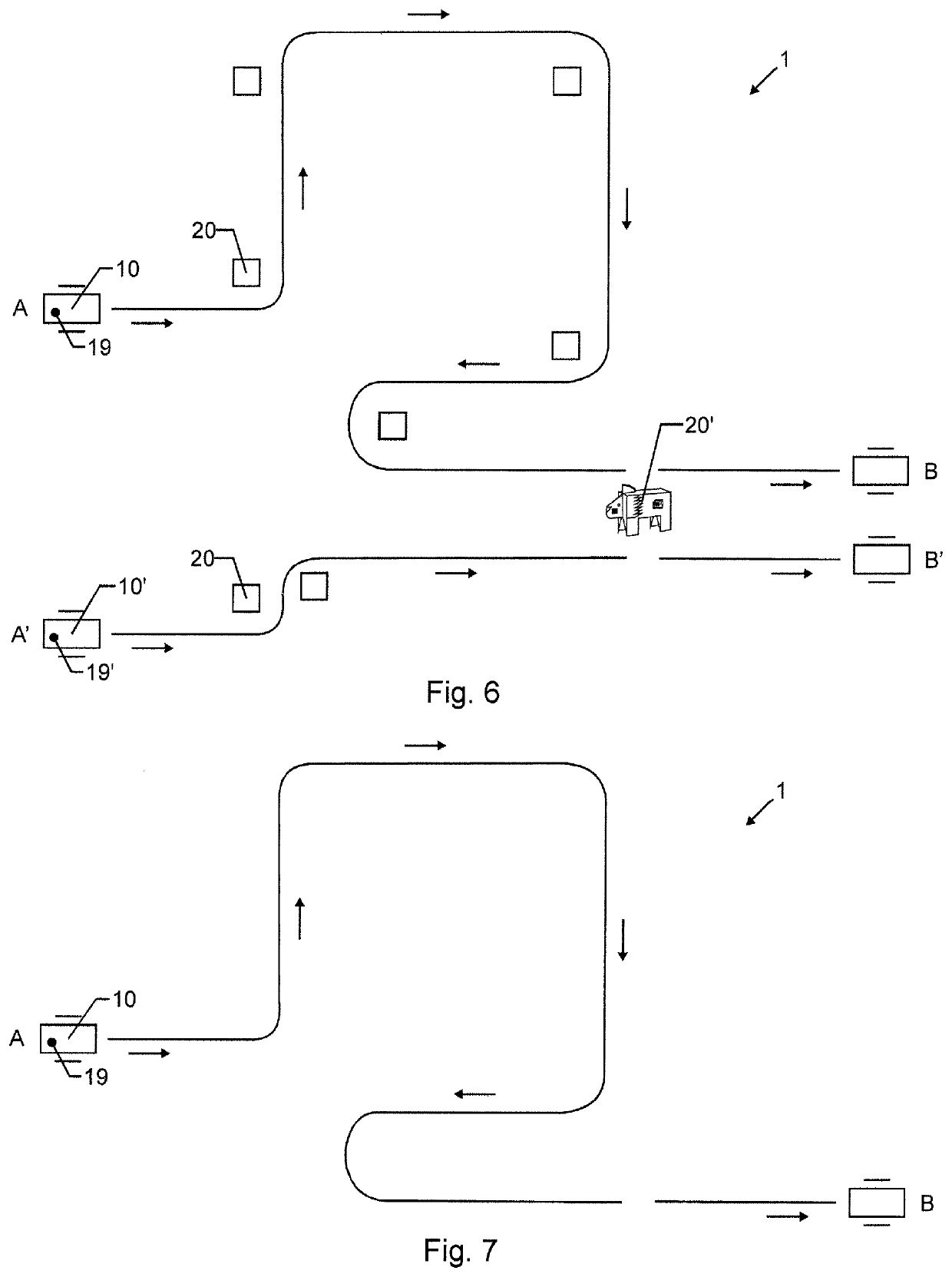Self-moving educational toy
a toy and self-moving technology, applied in the field of toy self-moving, can solve the problems of not providing mechanical guidance to the vehicle, and achieve the effects of increasing the educational impact of the toy, facilitating production, and keeping maintenance efforts low
- Summary
- Abstract
- Description
- Claims
- Application Information
AI Technical Summary
Benefits of technology
Problems solved by technology
Method used
Image
Examples
first embodiment
[0070]FIG. 5 shows a perspective view of a toy 1 according to the invention. Here, a first marker 20 as shown in FIG. 1 and a second marker 20′ are placed on a table leaf as surface 2. The second marker 20″ closely resembles the first marker 20 with the exception that an instruction for the first and for the second markers are different such that the markers 20 and 20″ are machine-distinguishable by the vehicle 10. Further, a vehicle 10 as shown in FIG. 3 is placed at a starting point A. Then, the vehicle motion is started, e.g. by pressing a dedicated control button 103 on the vehicle 10. The vehicle 10 then moves in a straight line (standard behavior in the absence of a machine-readable information item 21, 21″, black arrow in the top of the figure), whereby information from the image acquisition device 13 and from the bearing sensor 18 is used by the control unit 12 to control the motors 15 in such a way that the vehicle 10 moves in a straight line. Upon entering a zone around th...
third embodiment
[0079]FIG. 7 shows a top view of a toy 1 according to the invention. In this embodiment, the vehicle 10 as shown in FIG. 6 is, after completing the playrun as described in FIG. 6, brought to the starting point A again and by pressing a control button 103 triggered to re-run the sequence or course as “learned” during the FIG. 6 playrun, but now in the absence of any marker 20, 20′. For this, the vehicle 10 has stored all the required information about the previous FIG. 6 playrun in a memory connected to the control unit 102. Thus, it becomes easier for children to learn about the way, a computer (i.e. the vehicle 10) runs a “program” once it has been “programmed” with an instruction set.
[0080]Using the three-dimensional markers (i.e, the wooden toy blocks and the lion) with machine-readable information items enables the users, e.g. children, to build an instruction sequence by laying out the markers in the desired sequence along a path or course. This provides a powerful visual repre...
PUM
 Login to View More
Login to View More Abstract
Description
Claims
Application Information
 Login to View More
Login to View More - R&D
- Intellectual Property
- Life Sciences
- Materials
- Tech Scout
- Unparalleled Data Quality
- Higher Quality Content
- 60% Fewer Hallucinations
Browse by: Latest US Patents, China's latest patents, Technical Efficacy Thesaurus, Application Domain, Technology Topic, Popular Technical Reports.
© 2025 PatSnap. All rights reserved.Legal|Privacy policy|Modern Slavery Act Transparency Statement|Sitemap|About US| Contact US: help@patsnap.com



